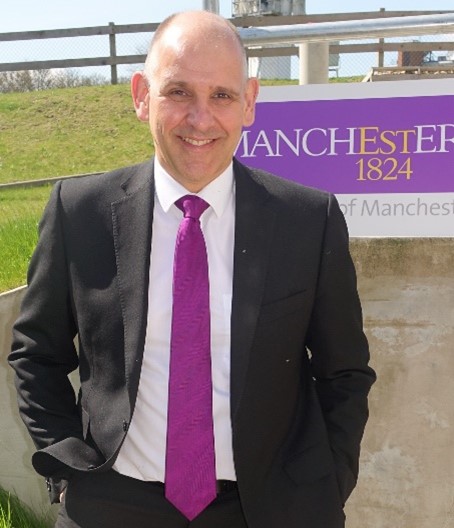About the Rosen Scholar
Contact
- LANSCE User Office
- (505) 667-6797
About the Rosen Scholar
The Rosen Scholar is a fellowship created to honor the memory of Louis Rosen, his accomplishments, hard work, and affection for the broad range of science performed at LANSCE. Louis Rosen's outstanding leadership and scientific career at LANL covered six- and-a-half decades and included conception of the Los Alamos Meson Physics Facility (LAMPF), during 1960, that culminated with its commissioning in 1972.
Today LANSCE performs research in materials science using neutron scattering at the Manuel Lujan Neutron Scattering Center, dynamic materials at the Proton Radiography Facility, and applied and basic research in nuclear physics at the ultra- cold neutron facility, WNR, and the Lujan Center.
The Rosen Scholar is reserved for individuals recognized as scientific leaders in a field of research currently performed at LANSCE and who exemplify the innovative and visionary qualities of Louis Rosen. Both experimental and theoretical scientists are encouraged to apply. The Rosen Scholar is expected to be resident at LANSCE and bring his/her scientific expertise to LANSCE as well as the broader Los Alamos scientific community. The position will support the Rosen Scholar at their current salary including relocation expenses for up to one year.
Rosen Scholar (2023)
Neil Bourne
 Neil Bourne is by training a physical scientist, by inclination a communicator, and always a champion for both his specialist areas and the wider fields of safety that they serve. He has extended his expertise over recent years into the areas of risk, occupational health and workplace stress, working within universities and government as an educator, an advisor and now as the leader, of National and International Institutes in Health and Safety and National Facilities Science using X rays, neutrons, lasers and supercomputing. These are pushing the boundaries of national science and training the next generation of researchers.
Neil Bourne is by training a physical scientist, by inclination a communicator, and always a champion for both his specialist areas and the wider fields of safety that they serve. He has extended his expertise over recent years into the areas of risk, occupational health and workplace stress, working within universities and government as an educator, an advisor and now as the leader, of National and International Institutes in Health and Safety and National Facilities Science using X rays, neutrons, lasers and supercomputing. These are pushing the boundaries of national science and training the next generation of researchers.
He obtained his degree, masters, PhD and ScD in Natural Sciences (Physics) at the University of Cambridge, was elected to fellowships (and served as Director of Studies for Natural Sciences) at Magdalene and Clare Hall Colleges, and established the first Shock Science facilities in the UK. Since leaving the Cavendish Laboratory he has held chairs and visiting chairs at the University of Manchester, Imperial College London, Cranfield University and has associations with many national laboratories and universities internationally. He has published nearly 400 papers, commentaries and reviews in publications from the British Journal of Surgery to Nature Physics, and a book uniting the physical and engineering science of matter in extremes. He has been elected a Fellow of the American Physical Society and chaired its International Division devoted to Extreme Physics. He also holds fellowships from the Institute of Physics, the Institute of Materials, is a Chartered Engineer and a Principal Fellow of the Higher Education Academy, championing experiential pedagogy across his core areas of work. He has received many awards including the Paul A. Siple Memorial Medal for Achievement in the US. He is an editor of the Journal of Dynamic Behaviour of Materials and is in the process of founding a new journal, Safety in Extreme Environments; People, Risk and Security.
Over the last decade he has worked within government to regenerate university research and break down boundaries in critical priority areas. In this role, as Distinguished Scientist, he was UK Technical Authority in Shock and Detonation and worked to train a new workforce for the nuclear sectors. During this period, he worked at Los Alamos National Laboratory in the US, with which is still actively working and to which he returns every year. Since returning to academia he has established, launched, and is the inaugural director of the University of Manchester at Harwell, uniting UoM, the Diamond Light Source (DLS), The Science and Technology Facilities Council (STFC) and the Research Complex at Harwell (RCaH), a portal to the wider Harwell Campus. He also is the inaugural UoM director of The Thomas Ashton Institute, partnering the University and the Health and Safety Executive, that aims to deliver research, learning and regulatory insight to enable a better working world. Across these areas Neil leads a team of physical scientists, engineers, medics, psychologists, clinicians and risk analysts working to reduce accident in work and generate impactful, world-class research. He still pursues study into the responses of matter under demanding or extreme conditions of loading (mechanical, chemical, radiation or extreme temperatures), investigating the operating mechanisms that define response across scales from atoms to planets, and serves on panels assuring national science and on industrial boards advising on their research areas. These include the Science Engineering and Evidence Assurance Committee of the HSE board, The Oil and Gas Technology Centre Academic Panel, advisory committees on energetic materials and extreme events for the government and reinsurance sectors amongst others.

